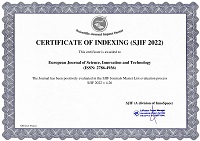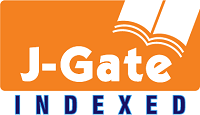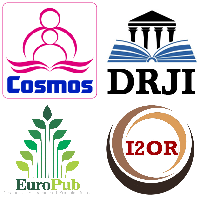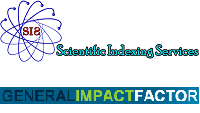Strategies for Accessible Learning and Differentiation in Middle Eastern Primary Schools
Abstract
Over the past few years, the governments and other stakeholders have woken up to the challenge of providing quality education to all the students, especially the students in the primary schools in the Middle East. The populations in the region are as a result, culturally, linguistically and socio-economically diverse. These approaches of learning are very significant in the current learning arena since every child is unique in his or her ability, language, or cultural background. This paper aims to examine the approaches in the Middle Eastern primary schools to enhance basic education’s inclusively for all children who need different support and attention. Through exploring the notions of universal design of learning and differentiation, as well as early field experiences of using these concepts in the classroom, this present paper seeks to offer an understanding of the difficulties and accomplishments of developing inclusion of learning environments. Recommendations are provided for educators, policy makers, and school leaders to continue enhancing educational opportunities for all and address any student’s needs more effectively in the region. Given the current trends towards inclusion and equity in education policies at the international level, this paper is evidence of a continuous discussion on the enhancement of provision of education for all children with special attention to the Middle Eastern environments (Booth & Ainscow, 2011).
References
Alkahtani, K (2013). Teachers’ knowledge and use of assistive technology for students with special educational needs. Journal of Studies in Education, 3(2), 65-86.
Bagnato, S. J. (2005). Best practices in early childhood assessment. Guilford Press.
Black, P., & Wiliam, D. (1998). Assessment and classroom learning. Assessment in Education: Principles, Policy & Practice, 5(1), 7-74. https://doi.org/10.1080/0969595980050102
Booth, T., & Ainscow, M. (2011). The index for inclusion: Developing learning and participation in schools (3rd ed.). Centre for Studies on Inclusive Education.
Brophy, J. (2004). Using video to assist in teaching classroom management techniques. Educational Leadership, 61(6), 50-55.
DuPaul, G. J., & Stoner, G. (2003). ADHD in the schools: Assessment and intervention strategies (2nd ed.). Guilford Press.
Gargiulo, R. M. (2014). Special education in contemporary society: An introduction to exceptionality (5th ed.). Wadsworth Publishing.
Gross-Tsur, V. (2004). Developmental dyscalculia: Underlying cognitive deficits and interventions. Cambridge University Press.
Gray, C. (2000). The new social story book: Over 150 social stories that teach everyday social skills to children with autism or Asperger’s syndrome. Future Horizons.
Hassan, R., & Juma, A. (2020). Inclusive education policies in the Middle East: A review of strategies and practices. Middle Eastern Journal of Education, 12(2), 101-118.
Hock, M. F., Deshler, D. D., & Schumaker, J. B. (2009). The impact of strategy instruction on the reading comprehension of secondary students with learning disabilities. Learning Disability Quarterly, 32(1), 47-60.
Jordan, A., & Harnett, S. (2019). Differentiated instruction and inclusive practices in primary schools. Journal of Educational Psychology, 68(3), 274-289.
Kaufman, A., & Kaufman, N. (2018). Dyslexia and other learning disabilities in children: Identification and intervention strategies (2nd ed.). Pearson Education.
Kirk, S. A., & Gallagher, D. J. (2009). Educating exceptional children (12th ed.). Cengage Learning.
Lou, Y., Abrami, P. C., Spence, J. C., Poulsen, C., & Chamberlain, S. (1996). Within-class grouping: A meta-analysis. Review of Educational Research, 66(4), 423-458.
Marschark, M., & Knoors, H. (2014). Educating deaf learners: Creating a global agenda. Oxford University Press.
Mesibov, G. B. (2012). Autism and the development of social communication skills. Springer Science & Business Media.
Ministry of Education (MEE). (2019). Inclusive education strategy 2018-2022: Expanding educational opportunities for children with disabilities. Ministry of Education, Jordan.
Oakes, J. (1985). Keeping track: How schools structure inequality. Yale University Press.
Pace, D. (2016). Differentiating instruction for students with learning disabilities: Best practices for inclusive classrooms. Routledge.
Pogrund, R. L. (2006). Teaching students with visual impairments: A guide for educators. Prentice Hall.
Reiff, H. B. (2007). Learning disabilities: Theories, diagnosis, and teaching strategies (8th ed.). Pearson.
Robinson, K. (2013). Finding your element: How to discover your talents and passions and transform your life. Viking.
Romski, M. A., & Bradshaw, J. S. (2002). Augmentative and alternative communication: An introduction. Allyn & Bacon.
Rothstein, L. (2018). Assistive technology for students with disabilities: A practical guide for teachers. Pearson Education.
Sack, S., & Varenne, H. (2014). Bridging the gap: Educational interventions for students with ADHD in Middle Eastern schools. Journal of Special Education, 48(2), 110-123.
Sharma, U., & Desai, I. (2018). Inclusive education in the Middle East: Challenges and opportunities. International Journal of Inclusive Education, 22(9), 999-1012.
Shaywitz, S. E. (2003). Overcoming dyslexia: A new and complete science-based programme for reading problems at any level. Alfred A. Knopf.
Tomlinson, C. A. (2001). How to differentiate instruction in mixed-ability classrooms. ASCD.
UNESCO (2021). Education for all 2030 framework: Education for persons with disabilities (Vol. 5). UNESCO.
United Nations International Children’s Emergency Fund (UNICEF). (1989). Convention on the Rights of the Child. Retrieved from https://www.unicef.org/child-rights-convention
U.S. Department of Education (2020). Accessible learning and teaching strategies for students with disabilities. Washington, D.C.: Government Printing Office.
Zhang, D., & Chen, Z. (2020). Inclusive education in the Middle East: A review of trends and policies. International Journal of Educational Development, 40, 103-114.
Copyright (c) 2025 Aishah Khan

This work is licensed under a Creative Commons Attribution 4.0 International License.

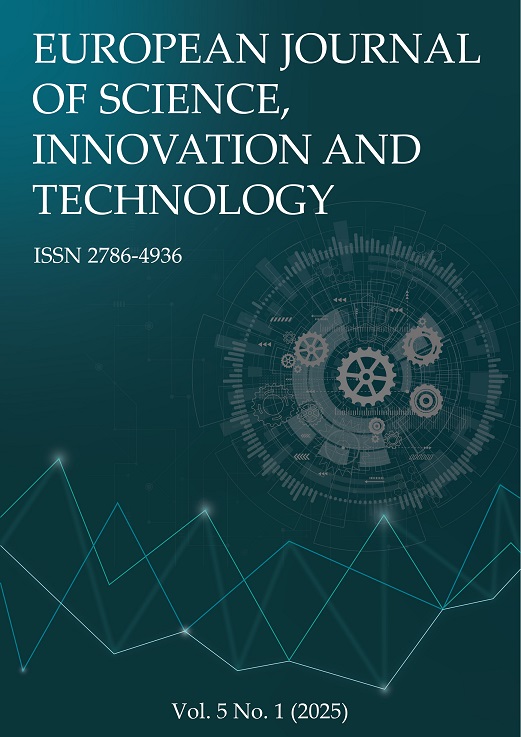
 ISSN
ISSN 
